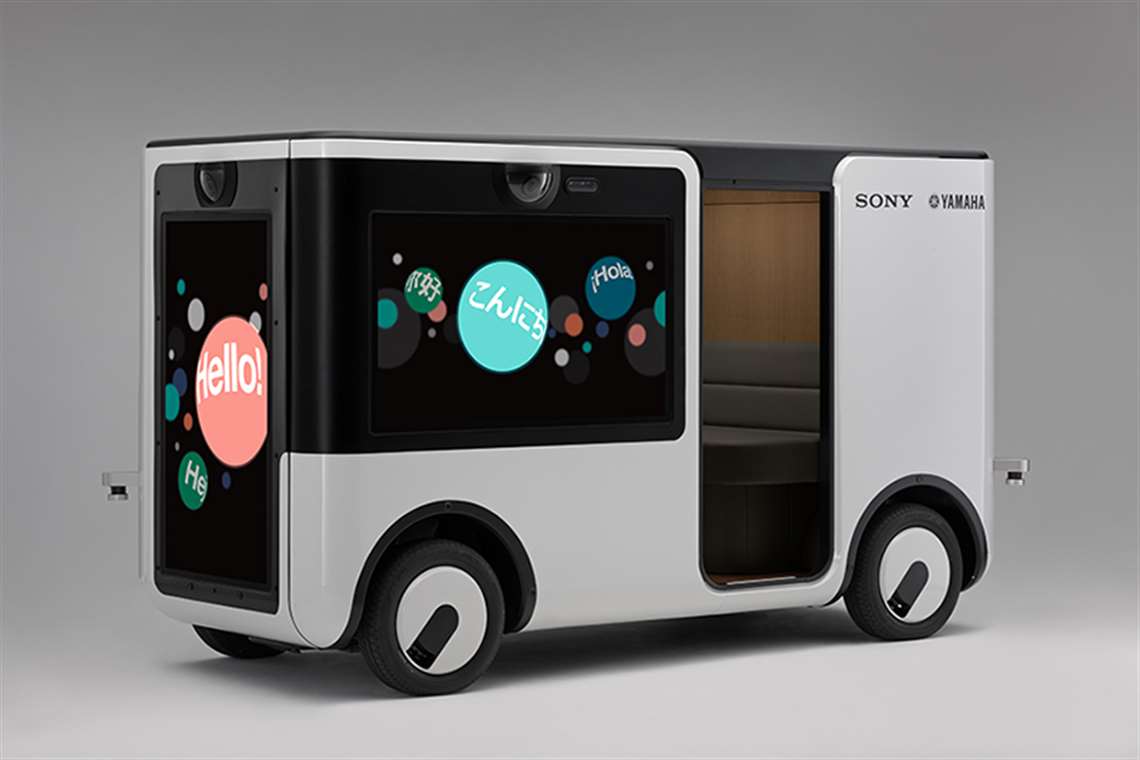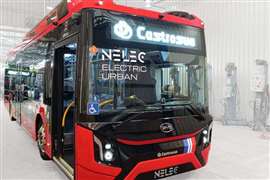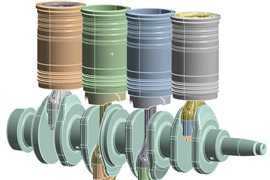Yamaha Motor, Sony Develop Autonomous ‘Mobility Experience’
29 August 2019

Yamaha Motor Co. Ltd. and Sony Corp. have developed the autonomous SC-1 Sociable Cart to provide what the companies said is a new low-speed mobility experience for theme parts, resorts, golf courses and other facilities. It together Yamaha Motor’s autonomous driving technology and Sony’s entertainment imaging technology. The two companies plan to launch services with the model sometime this year in Japan and said it will not be for sale.
The pair developed the vehicle’s proof-of-concept prototype in 2016 and completed the SC-1 New Concept Cart prototype in 2017. In 2018, Sony and Kanucha Bay Resort Co. Ltd. uses the SC-1 to provide a ride experience service that gave customers video and audio entertainment powered by augmented reality (AR) that was projected against the backdrop of night scenes at a golf course in Okinawa, Japan.
The SC-1 Sociable Cart was jointly developed based on feedback accumulated from Kanucha Bay and other driving tests. Passenger capacity has increased in the new model, from three to five. It also has an extended run time due to replaceable batteries, a broader front and rear scope of view thanks to additional image sensors and a more comfortable ride.
Rather than rely on old-fashioned windows, the SC-1 uses artificial intelligence (AI) analysis to provide data about the vehicle’s surroundings. It is gathered by advanced image sensors, ultrasonic sensors and a LiDAR system. The image sensors and high-resolution display inside the vehicle allow the passengers to see their surroundings at night without headlights. Sony said it can be operated remotely by someone viewing the images via the cloud.
The SC-1 uses mixed reality (MR) technology developed by Sony to superimpose computer graphics onto the surroundings being displayed on the monitor. Sony said this turns the space once taken up by windows, where passengers could only see the scenery, into an entertainment area. Inside is a 49 in. 4K LCD monitor and on the outside are four 55 in. 4K LCD monitors.
Just over 10 ft long, the vehicle is powered by a lithium-ion polymer battery and a DC motor for a top speed of 19 km/h (12 mph). Stopping comes from hydraulic four-wheel disc brakes and motor regenerative braking.
For Yamaha Motor, the joint development project fits into its “Art for Human Possibilities, Rethinking Solutions, Transforming Mobility,” an aspect of the company’s long-term vision. It said it is engaged in providing enjoyable mobility and addressing social issues through its diverse product groups such as electric golf cars, motorcycles and drones.
POWER SOURCING GUIDE
The trusted reference and buyer’s guide for 83 years
The original “desktop search engine,” guiding nearly 10,000 users in more than 90 countries it is the primary reference for specifications and details on all the components that go into engine systems.
Visit Now
STAY CONNECTED




Receive the information you need when you need it through our world-leading magazines, newsletters and daily briefings.
CONNECT WITH THE TEAM












